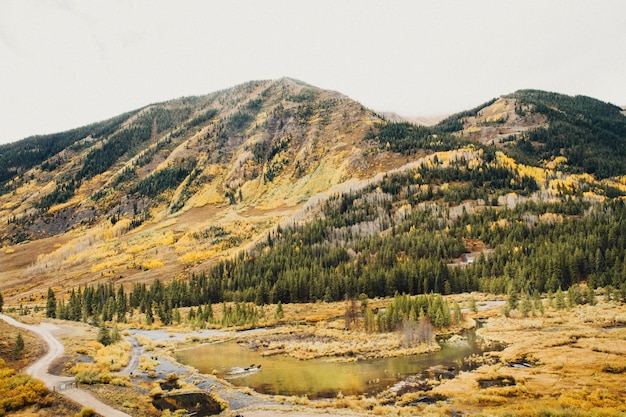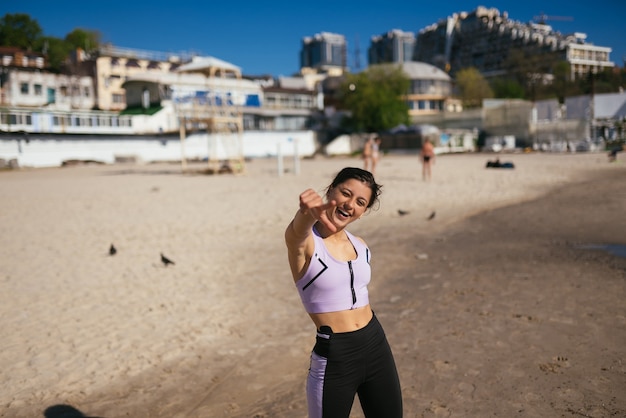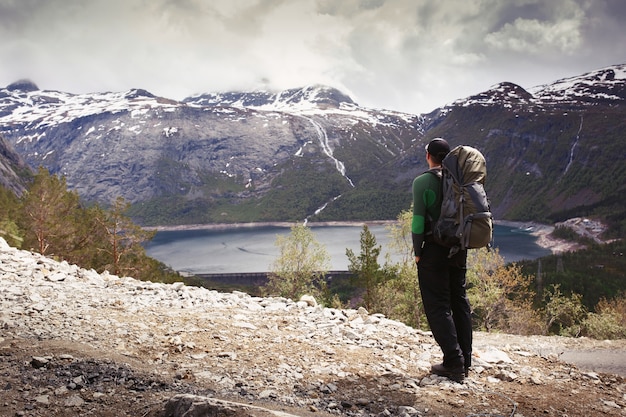
The most popular time to visit Cornwall is definitely the summer. The weather is ideal for sunbathing on the beach, enjoying the ocean, and exploring Cornwall’s amazing coastal paths, fishing villages, and harbor towns. However, other seasons can be just as fun.
I have been visiting Cornwall since I was a kid and have holidayed there during all seasons. Each time of the year brings unique activities—from brisk winter walks and cozy pub fires to springtime flowers on the cliffs, summer beaches, and autumn strolls. If you wish to avoid crowds, spring and fall are great times to visit (just avoid school half-term breaks). The weather is still pleasant, and the beaches and towns are far quieter than in peak summer.
During summer, despite the crowds, you can always find a quiet beach spot. Cornwall enjoys higher average temperatures, making summer the best season to visit. Early summer, particularly June, is less crowded and one of my favorite times to visit. The weather is warm, wildflowers are in full bloom on the cliffs, and the towns aren’t too busy. Plus, prices tend to be lower. The only minor drawback is that the sea can still be a bit cold, but you can rent a wetsuit if you plan to swim a lot.
The peak vacation time in Cornwall is during the school summer holidays from July to the end of August. This is when the beaches are crowded and the small villages are bustling with tourists. However, the weather is usually perfect, making it a great time for camping, music festivals, hiking, and enjoying the beaches. Towns like Newquay and Falmouth offer lively nightlife, so it’s a great time to visit if you like to party.
Cornwall hosts some great festivals during the peak season, from the Boardmasters surfing competition to the Fowey Regatta, Rock Oyster Festival, and Leopallooza. Accommodation can sell out fast, so it’s best to book in advance if you plan to visit in the summer.
The shoulder seasons, spring, and fall are great times to travel to Cornwall due to the mild weather, lower prices, and fewer tourists (provided you avoid school half-term holidays). During these periods, locals enjoy Cornwall’s beaches and towns without many tourists. Fall festivals often focus on food and drink, with September’s Little Orchard Cider Festival celebrating Cornwall’s local tipple when apples are in season.
If you want to avoid crowds entirely, winter is the best time to visit Cornwall. It’s a great time for pro surfers to enjoy huge swells and empty beaches. Winter is also perfect for wrapping up warm and exploring Cornwall’s hiking trails, such as the southwest coast path. Don’t forget to pack good walking boots for the muddy fields.
One of my favorite winter activities in Cornwall is hiking and then warming up in a cozy pub by a roaring fire with a delicious meal. From June to August, beaches are at their best, especially with lifeguards patrolling many popular beaches. Cornwall enjoys higher average temperatures than the rest of the UK, and the Scilly Isles are particularly warm and worth a visit. Newquay, with its eleven beaches, and Polzeath, Bude, Penzance, and Falmouth, offer great stretches of sand for the perfect beach holiday.
Summer is also a prime time for festivals in Cornwall, given the ideal weather for camping. I have camped in Cornwall throughout the year, and summer is definitely the best time for an outdoor adventure. Cornwall hosts numerous events throughout the year, including surf competitions, music festivals, food and drink events, and even a sea shanty festival. Top festivals include Boardmasters in Newquay, Leopallooza near Bude, Eden Sessions at the Eden Project, and Rock Oyster Festival near Padstow.
Despite being a top vacation destination, Cornwall retains its rural charm, with only one city, Truro, which is more like a small town. Cornwall’s beauty lies in its harbor towns and fishing villages, such as Boscastle, Padstow, Port Isaac, Tintagel, and Penzance. They are best explored in the shoulder seasons to avoid crowds and enjoy lower prices.
Most historical sites close for winter, making summer and shoulder seasons the best times to explore Cornwall’s castles, stately homes, and historical sites. Must-visit attractions include Tintagel Castle on the north coast and St Michael’s Mount and Pendennis Castle on the south coast, steeped in myths and legends.
Whales are spotted year-round, but April to September offers the best chances and weather. A sealife safari is the top way to see whales, seals, dolphins, and basking sharks, though you might catch a glimpse from the beach or cliffs.
Winter is the cheapest time to visit Cornwall, but many attractions, restaurants, and resorts close for the season. However, you can still enjoy winter swims, surfs, coastal walks, and Cornwall’s rural pubs. Hotels offer great deals, and some attractions provide discounted entry prices.
Hiking is fantastic year-round in Cornwall. Spring to fall is ideal with mild weather, though trails can be crowded. Winter hiking offers solitude on stunning coast paths, perfect for blowing away the cobwebs and warming up later in a rustic pub. Top hikes include the southwest coast path and Bodmin Moor, with less strenuous options like the Camel Trail or Bude Canal Walk also available.
Here’s a breakdown of Cornwall’s weather and activities by month:
– January: Quietest time, lowest prices, fresh sea air. Average temperatures range from 39-46°F, with the sea at 50°F. Expect 110mm of rain over 25 days. Explore southern Cornwall to avoid harsh weather; visit museums like the National Maritime Museum in Falmouth.
– February: Coldest month, less wet. Average temperatures range from 37-46°F, with the sea at 48°F. Expect 90mm of rain over 21 days. Good for hiking and exploring pubs and traditional fishing villages.
– March: More outdoor activities, fewer crowds. Average temperatures range from 41-48°F, with the sea at 48°F. Expect 100mm of rain over 22 days. Great for dog walking, celebrating St Piran’s Day, and enjoying local pubs.
– April: Clifftops bloom, parks come to life. Average temperatures range from 41-52°F, with the sea at 50°F. Expect 60mm of rain over 20 days. Ideal for surfing, coasteering, and festivals like Porthleven Food Festival.
– May: Visitors return, great for the beach and hiking. Average temperatures range from 46-57°F, with the sea at 52°F. Expect 60mm of rain over 18 days. Enjoy St Ives Food and Drink Festival and the Enys Gardens Bluebell Festival.
– June: Best for warm, sunny beach days before peak crowds. Average temperatures range from 52-61°F, with the sea at 55°F. Expect 70mm of rain over 19 days. Perfect for beach activities, walking, hiking, and festivals like the Cornish Sea Shanty Festival.
– July: Excellent weather, early July is less crowded. Average temperatures range from 55-66°F, with the sea at 61°F. Expect 60mm of rain over 20 days. Enjoy beaches, surfing, and festivals like Leopallooza and the Rock Oyster Fest.
– August: Peak vacation time, best for sun, sea, and surf. Average temperatures range from 55-66°F, with the sea at 63°F. Expect 60mm of rain over 21 days. Enjoy warm sea temperatures, Boardmasters, and the Fowey Regatta.
– September: Quieter, beautiful light and sunsets. Average temperatures range from 54-63°F, with the sea at 61°F. Expect 70mm of rain over 19 days. Perfect for coastal walks, al-fresco dining, and festivals like St Ives Festival.
– October: Wet and windy, great for cozy indoor activities. Average temperatures range from 50-57°F, with the sea at 57°F. Expect 110mm of rain over 23 days. Enjoy exploring empty beaches, hiking, and Cornish pubs.
– November: Winter hits, prices drop. Average temperatures range from 45-52°F, with the sea at 54°F. Expect 100mm of rain over 25 days. Explore Bodmin Moor and check out Bodmin’s old prison.
– December: Magical for Christmas, towns light up. Average temperatures range from 43-48°F, with the sea at 52°F. Expect 120mm of rain over 23 days. Enjoy Christmas dinners, late-night shopping, and festive activities.
Now you know the best times to visit Cornwall, suitable activities for each month, and tips to make the most of your trip. Whether you want to surf in summer, hike in winter, or explore historical sites and cozy pubs, Cornwall has something for everyone all year round.




